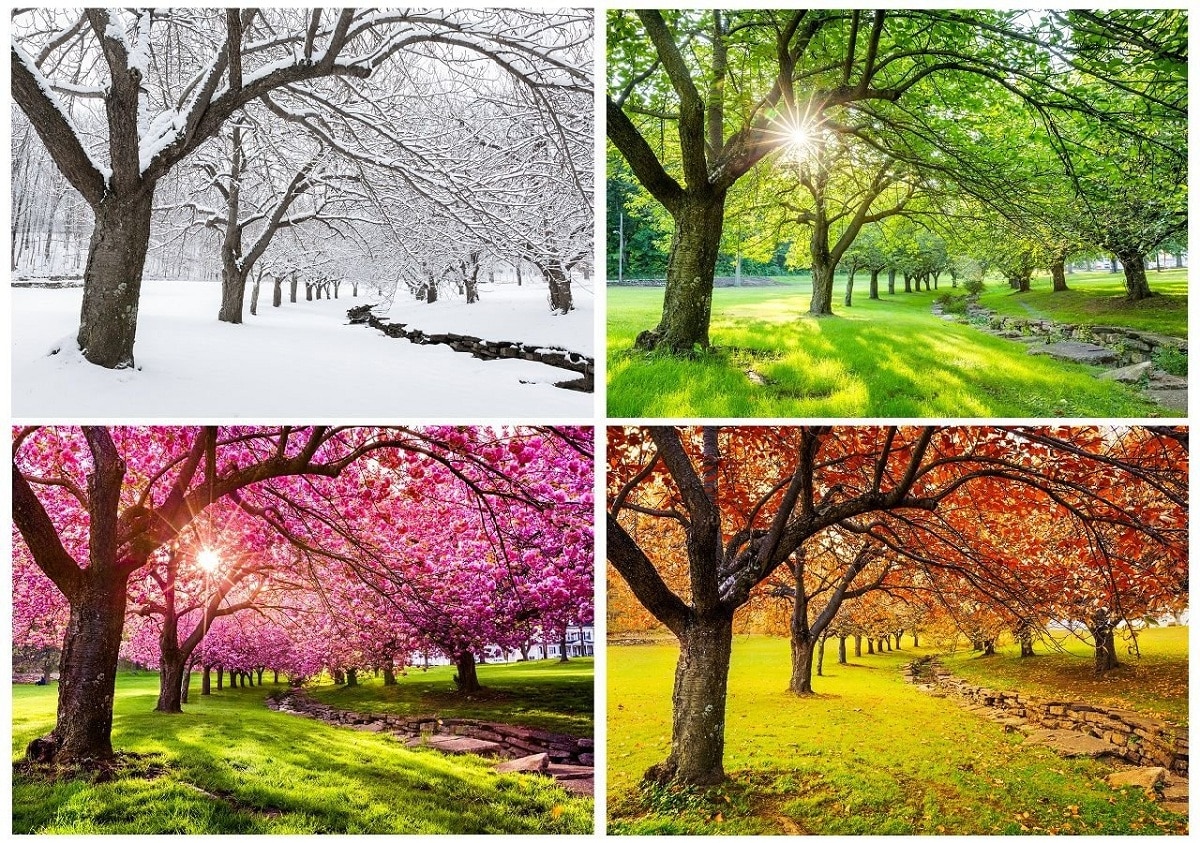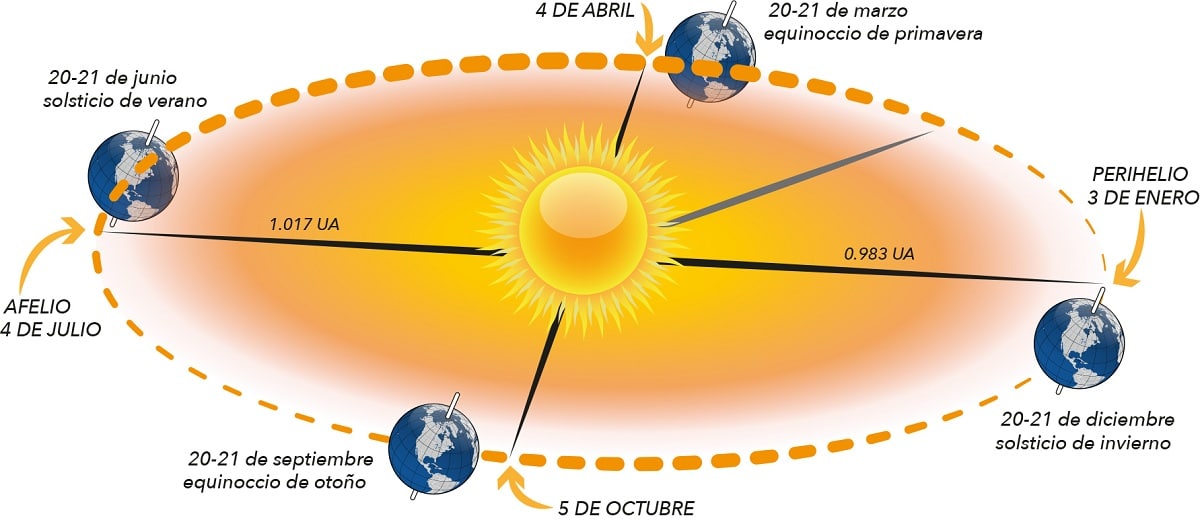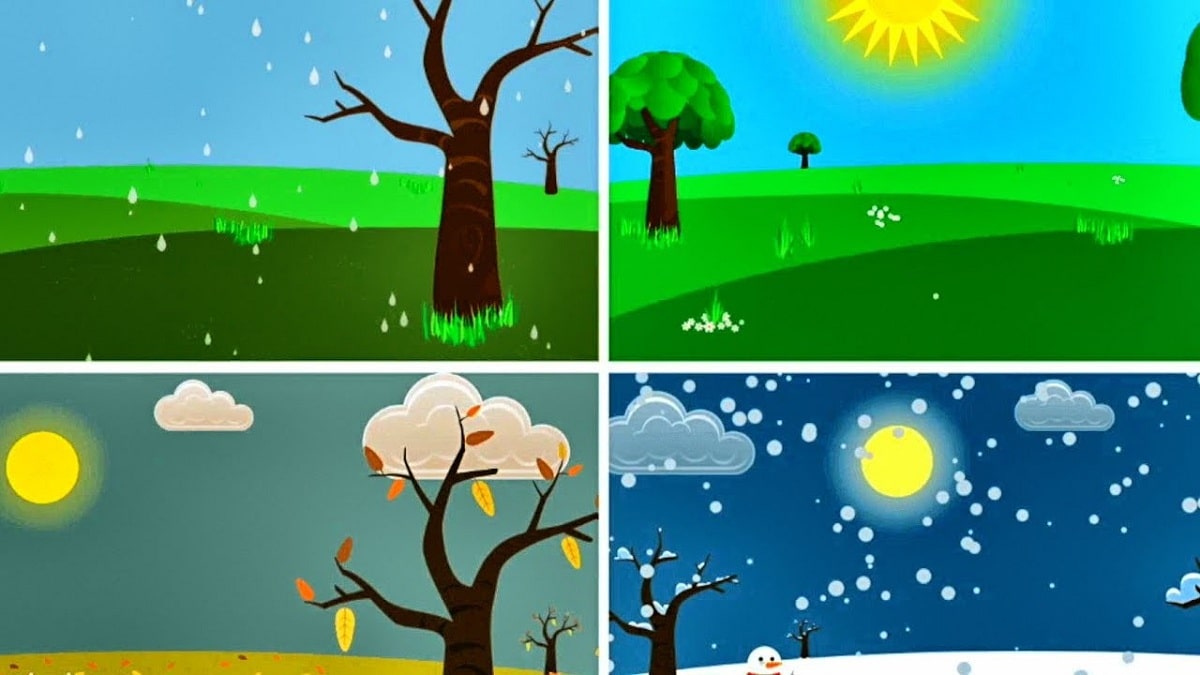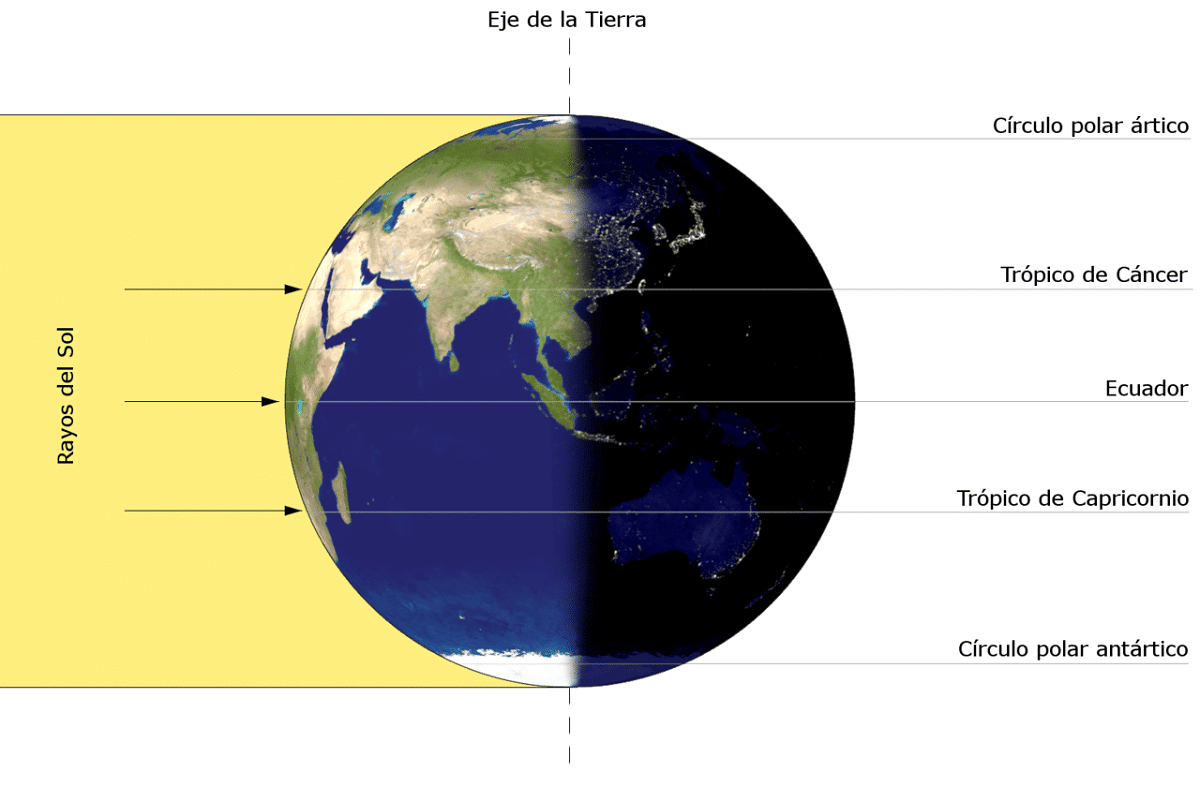
The four seasons of the year, spring, summer, autumn and winter, are four fixed periods of each year divided according to specific and recurring weather conditions that manifest in the atmosphere. Each one lasts about three months and, in total, they constitute a circulatory system of constant weather and climatic conditions. Many people don't know Why the seasons occur.
For this reason, we are going to dedicate this article to telling you why the seasons of the year occur and what importance they have for the planet's energy balance.
Why the seasons occur

The seasons are a planetary phenomenon that is the result of the movements of translation and inclination of the planets in their orbits around the sun, and although they occur in both hemispheres of the Earth, they always occur in the opposite way, that is, when it is summer in north and summer in the south is winter and vice versa. To distinguish them, we usually talk about the northern season (in the northern hemisphere) and the southern season (in the southern hemisphere).
In addition, depending on the climatic zone, the seasons manifest themselves in very different ways. For example, the regions closest to the equator do not have well-defined seasons, but rather rainy and dry seasons, with little variation in temperature, while in temperate regions the seasons are different and the climate and meteorology vary greatly. Even so, the exact behavior of each station depends on the geographical location of the place.
In general terms, the four seasons can be understood as follows:
- Winter. This is the coldest time of year when the sun hits less directly and less intensely, plant growth slows or stops, and in some places frost, snowfall and other more extreme weather events occur.
- Spring. This is a time of rebirth, when the sun warms up again and the ice begins to melt, and the plants use this time to green up and bloom. Hibernating animal species emerge from their burrows and the days begin to lengthen.
- Summer. This is the hottest time of the year when the sun is direct and intense and the temperature rises. This is when the plant bears fruit and most animals take advantage of this opportunity to reproduce.
- Autumn. This is when the leaves wither, the weather begins to cool down and life prepares for the arrival of winter. It is a time culturally associated with melancholy and sadness, as the nights begin to be longer than the days.
Some history
Since ancient times, different cultures have understood the seasons as an eternal cycle, and have linked their functional histories and cosmic cycles with each other. During the winter months, for example, the lengthening of the nights and the weakening of the sun are associated with death and the end of time, making spring a time of rebirth and celebration, a time when life triumphs. about death in time.
Such associations and metaphors appear in many mythological traditions and even in the symbols of most religious teachings.
Key features

The characteristics of the four seasons are as follows:
- They form a cycle or cycle that is repeated every year, with a slightly different start or end date for each period. Its correspondence with the months of the year depends on the terrestrial hemisphere, one of them is: January is the winter month in the northern hemisphere, it is the summer month in the southern hemisphere.
- They manifest themselves through more or less climatic changes (such as atmospheric temperature and humidity) and weather conditions (such as drought, rain, snow, hail, strong winds, etc.). Each season has its own characteristics, usually more or less similar between one geographical area and another.
- There are always four seasons, each of which lasts an average of three months, thus covering twelve months of the year. However, in the equatorial regions, there are two seasons of the year: the rainy season and the dry season, each lasting approximately six months.
- The boundaries between one season and another are usually scattered and gradual, that is, there are no sharp and sudden changes from one season to another. The crossing points between one season and another are called solstices and equinoxes.
- Each season has typical characteristics, but its behavior may depend on the geographical location: topography, climatic zone, proximity to the coast, etc.
Why do the seasons of the year occur on Earth?

The seasons are due to a combination of the following factors:
- The movement of translation of our planet, which consists of the planet's orbit around the sun, takes about 365 days or a year to complete.
- Its axis is constantly tilted, about 23,5° with respect to the ecliptic plane, that is, our planet is permanently tilted, so it receives sunlight unevenly, depending on its position in the orbit.
- This means that at the ends of its orbit, the incidence of the sun's rays varies, reaching directly in front of one hemisphere (which will experience summer), and indirectly and obliquely to the other hemisphere (which will experience winter). As a result, the angle at which sunlight strikes Earth varies throughout the year, resulting in longer or shorter days, depending on the hemisphere.
Solstices and equinoxes
The solstice and equinox are known as the four key points in the Earth's orbital path around the sun, which always occur on the same date, marking the transition from one season to another. There are two solstices and two equinoxes, which are:
- The summer solstice on June 21. At this point in its orbit, between northern fall/southern spring and northern summer/southern winter, Earth exposes its northern hemisphere to the sun, so the sun's rays strike the Tropic of Cancer vertically. The north heats up and the south cools down; nights get longer in the south (polar or 6-month nights near Antarctica), as do days in the north (polar days or 6-months near the North Pole).
- September 23 is the autumnal equinox. At this point in the orbit, between northern summer/southern winter and northern fall/southern spring, both poles are exposed to solar radiation, so their rays are perpendicular to the Earth's equator.
- Winter solstice on December 21. At this point in its orbit, between northern fall/southern spring and boreal winter/southern summer, Earth exposes the southern hemisphere to the sun, so the sun's rays strike Capricorn vertically. The south is hotter and the north is colder; nights get longer in the north (polar or 6-month nights near the North Pole), as do days in the south (polar or 6-month nights near Antarctica).
- March 21 the spring equinox. At this point in the orbit, between northern winter/southern summer and boreal spring/southern autumn, the Earth exposes both hemispheres to the sun and its rays strike perpendicularly at the equator.
I hope that with this information you can learn more about why the seasons of the year occur.
This topic of the SEASONS is very interesting since I have understood and learned knowledge that I was unaware of, continue as always providing such valuable knowledge. My regards